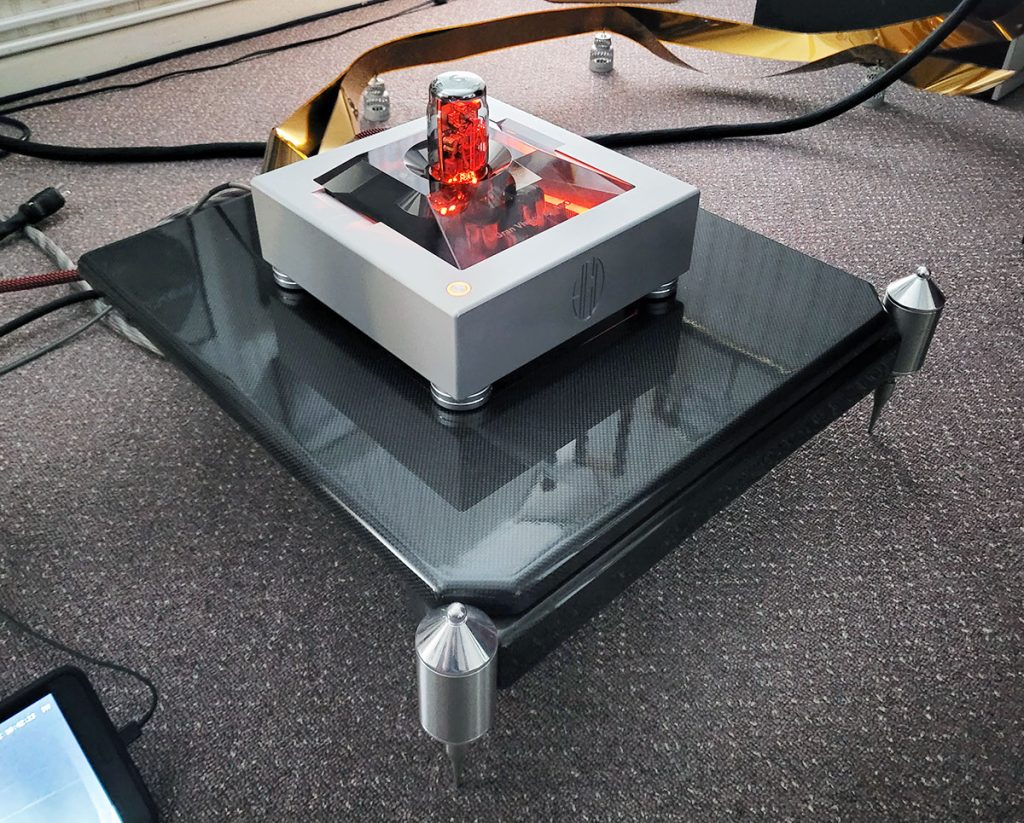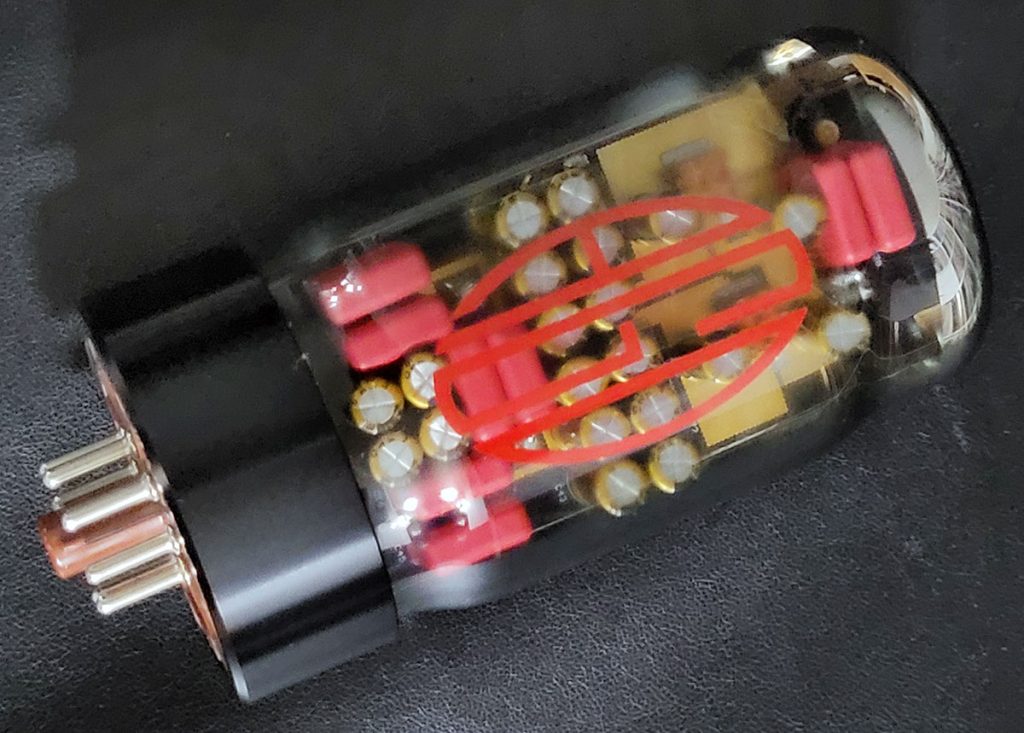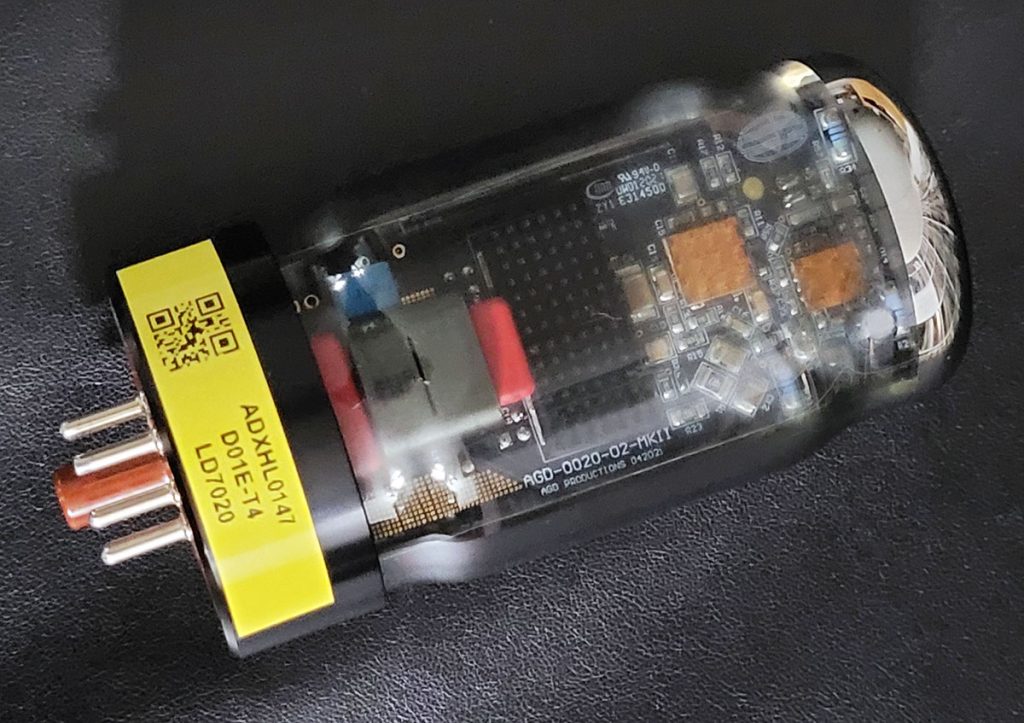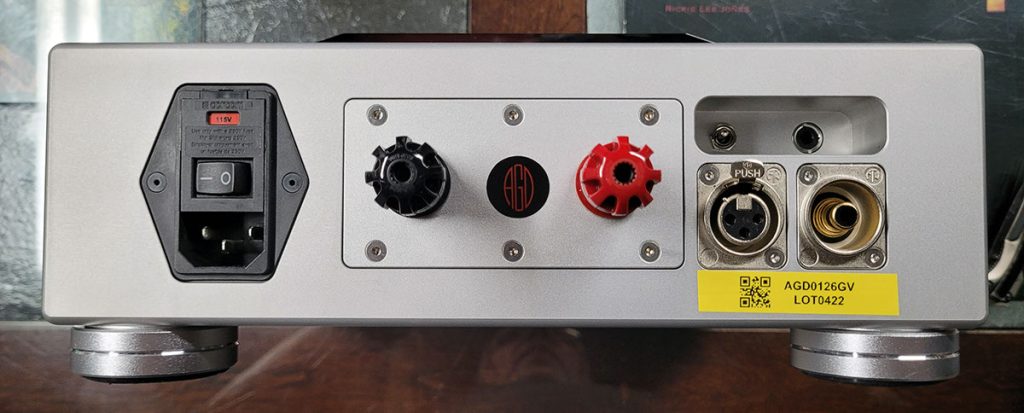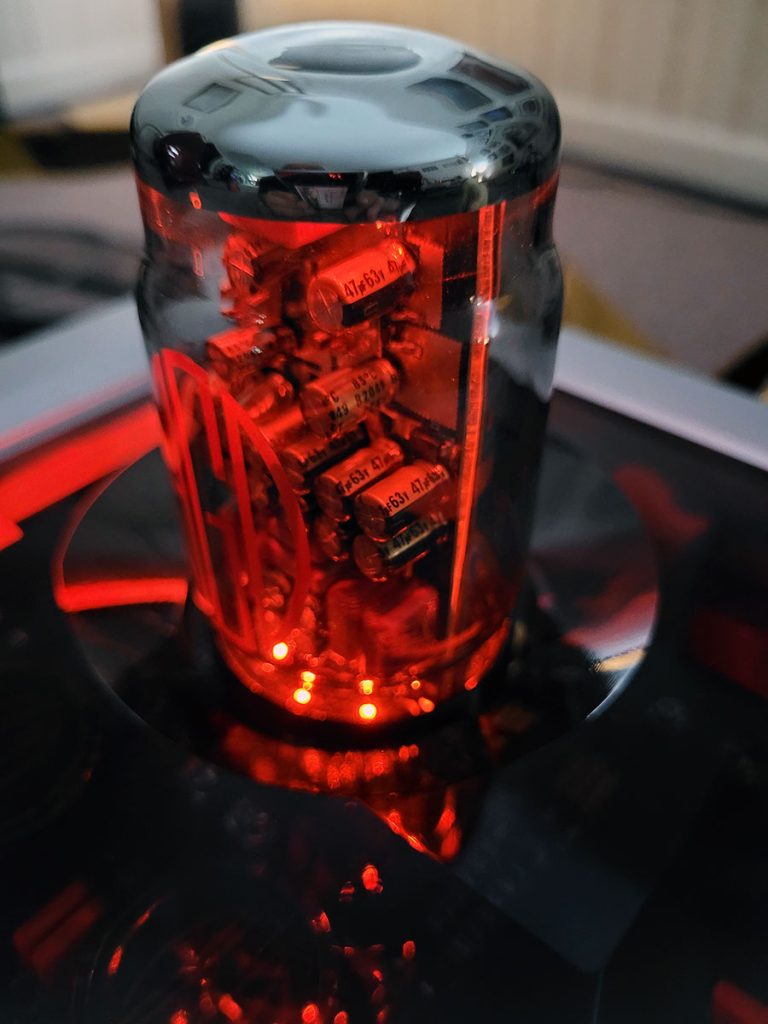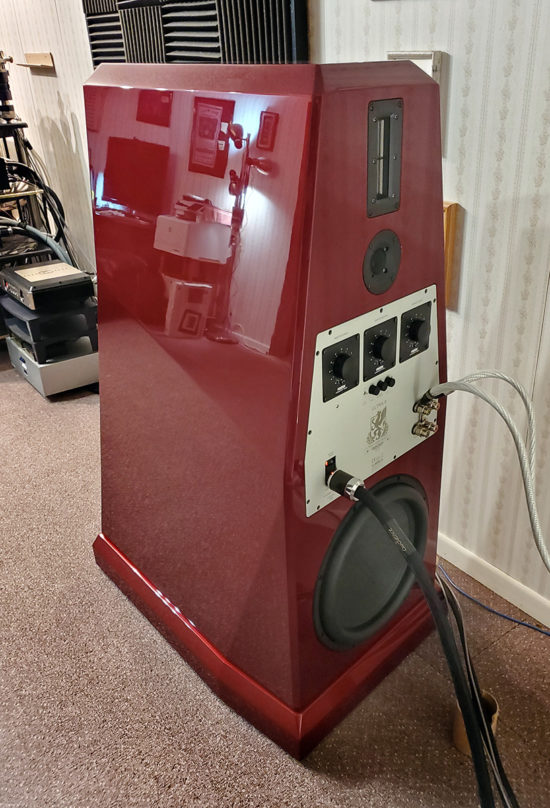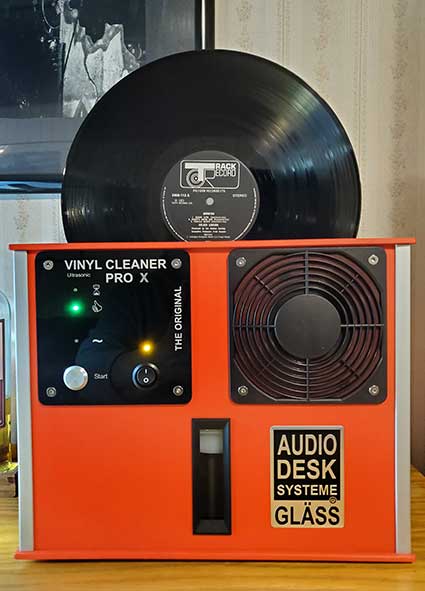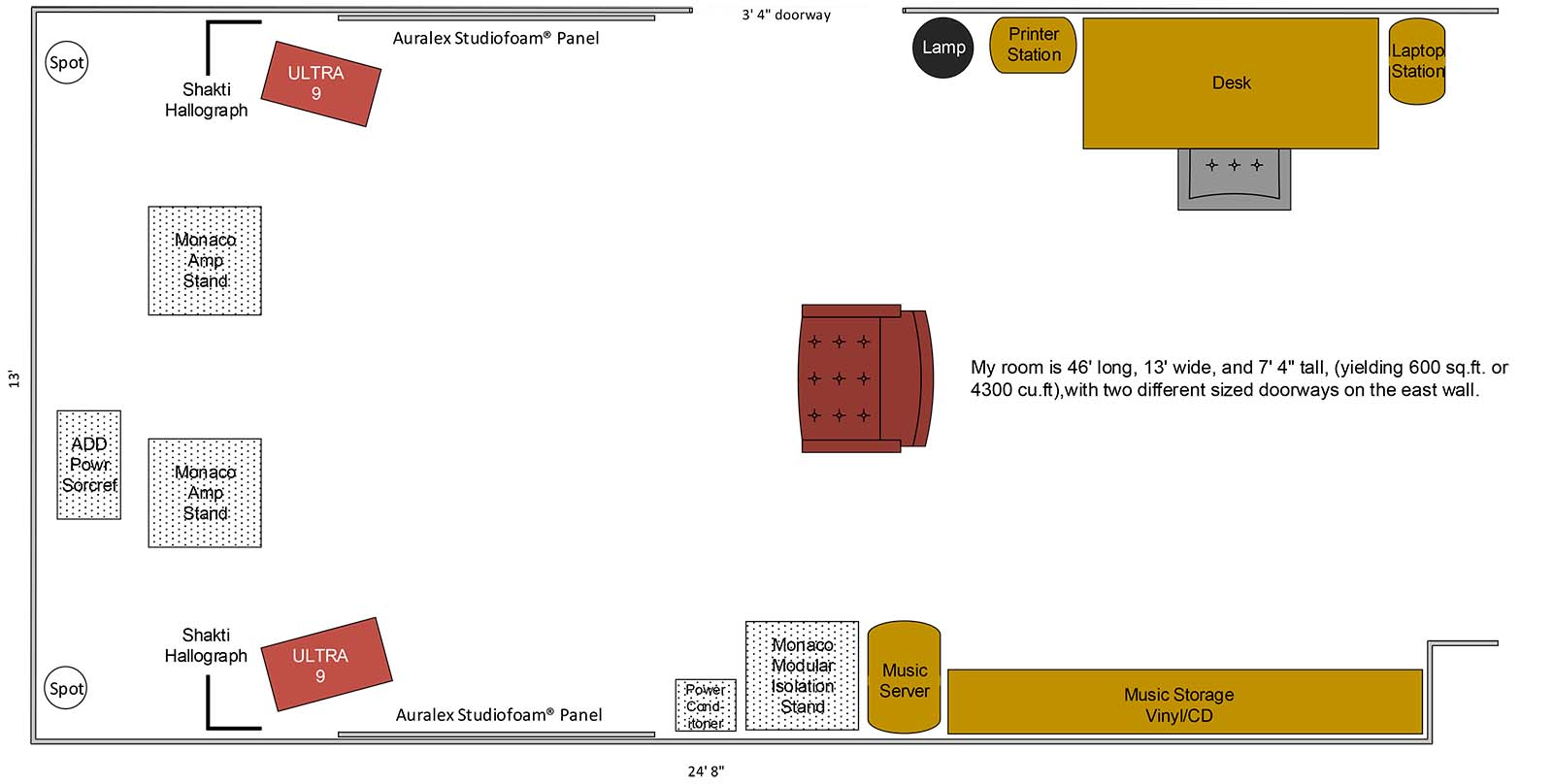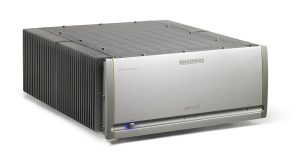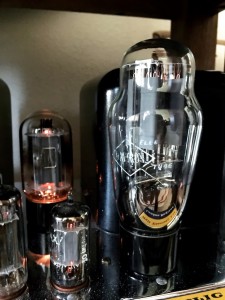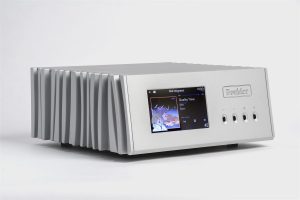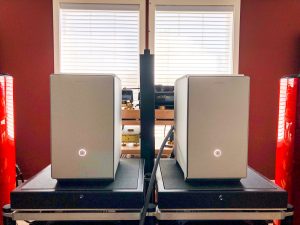Classy Operation
A class-D amplifier, or switching amplifier, all too often mistakenly referred to as a "digital" amplifier, differs from the much more traditional and popular linear amplifier classes. In a switching amplifier, its transistors, usually MOSFETs (Metal–Oxide–Semiconductor Field-Effect Transistors), rather than directly providing gain to the sourced signal, operate as electronic switches.
The audio input signal is encoded into a pulse train by use of a modulator, much like the AM or FM modulation associated with terrestrial radio, using pulse width, pulse density, or some similar technique, to rapidly switch back and forth between the voltage supply rails. The highest frequency pulses are blocked as the audio output passes through a simple low-pass filter and onto the loudspeakers.
In this class of operation, efficiency can exceed 90%. Theoretically, if "perfect" components existed, Field Effect Transistor switches with no on-resistance and integrating inductors with zero loss, it could be 100%, or very nearly 100%, efficient.
Most audiophiles think that Class-D operation is relatively new, but the first Class-D amplifier was invented by British scientist Alec Reeves nearly 70 years now and was the first to be designated as Class-D in 1955. Development was steady, but slow. In 1964, England's Sinclair Radionics offered a kit module called the X-10, with an underwhelming two-and-a-half-watt output. They bumped it up to twenty watts by 1966, but the designs were still limited by the inconsistencies and limitations of the germanium-based BJTs (bipolar junction transistors) available at the time. As a result, these early class-D amplifiers were both highly impractical and equally unsuccessful.
My friend, the late John Ulrick, who co-founded Infinity Systems with Arnie Nudel in 1968, is considered to have delivered the first successful commercial offering, built to drive his servo-static subwoofer for the Infinity Servo-Static loudspeaker systems in the early 1970s. The resultant amplifier, which he called The SwAmp (for SWitching AMPlifier), yielded 250-watts per channel, and ran at a switching frequency of 500kHz! After leaving Infinity, John founded Spectron and pursued the successful development and manufacture of class-D amplifiers. He was quite successful in winning over music lovers and audiophiles, first with a model called the 1KW in the mid-1990s, then with the Musician Series in the late 1990s/early 2000s. In fact, the Musician II was my reference amplifier in 2002. Sadly, we lost John in May of 2015, almost coincident with my writing his profile for, and just before the publication of, 2015's The Absolute Sound's Illustrated History of High-End Audio, Volume 2: Electronics.
However, by the mid-1980s, the availability of low-cost, fast-switching MOSFETs led to an explosion of Class-D amplifiers. The first class-D amplifier-based integrated circuit was released by Tripath in 1996, and it saw enormously widespread application. That same year, Hypex Electronics was founded, and under the guidance of Bruno Putzeys and others, we saw the development first of UcD, then NCore, and the rest is, as they say, history. Class-D amps are used in so many applications today as to be almost ubiquitous—in TV sets and home theatre systems, headphone amplifiers, mobile devices, automotive audio, and many other high-volume consumer electronics products. But the audiophile market has remained somewhat resistant… seemingly routinely avoiding high-performance Class-D audio amplification in preference of Class-A/B or Class-A linear amplifiers.
Then, a new player arrived on the stage—the Gallium Nitride transistor. While the first gallium arsenide gate field-effect transistor using a Schottky barrier diode to isolate the gate from the channel (GaAs MESFET) was demonstrated by Carver Mead in 1966, it was the early 1990s before they were being actively developed, and not until 2010 that the first enhancement-mode GaN transistors became generally available.
Why does the arrival of the GaN transistor matter? Without getting too far off into the weeds, GaN transistors are both significantly faster (about ten times!) and smaller than silicon MOSFETs. They offer five times greater power density than silicon, higher switching frequency, substantially improved linearity, and remarkably low thermal resistance, enabling efficiency gains that have opened the door to applications and performance not possible with the previously available silicon technology. And Alberto Guerra, the trailblazer leading the charge at AGD Productions of Los Angeles, is leveraging every advantage offered by this technology with his inventive and inspiring designs.
Practical and Elegant Design
The name of this amplifier would seem very fitting. "Gran," is "great" in Italian. Did I mention that Alberto is Italian? "Vivace" (Vi vach eh) is used in reference to tempo, one that is very fast and lively. Both adjectives are extremely appropriate as applied here.
This amplifier is, by design, unique. Using a beautifully sculpted base that is just eleven inches by eleven inches square, and standing just five inches tall, with the approximately five-and-a-half inch tall GanTube™, with its enclosed circuit, mounted, the assembled amplifier comes to a total height of just seven and a quarter inches. The whole amplifier weighs in at a scant twenty-two pounds, and this remarkable-looking machine develops 400W, with up to 50A of peak current, into a 4Ω load, which is the load that my Von Schweikert Audio ULTRA 9s present.
So, why a separate base unit built to accommodate that valve-looking glass bottle? Further, just what is that GanTube™ I mentioned? According to Alberto, the Gran Vivace base contains the main power supply section, including 70,000 µF of power supply capacitance, the analog input buffer stages, the additional linear power supply for the analog section, and various protection and timing circuitry. The KT120-like glass bottle contains the complete Gallium Nitride output power stage, integrated into what outwardly looks like a vacuum tube. This includes the Class-D amplifier module, including its output filter and the linear power supply rails used to feed the PWM controllers and auxiliary circuits.
Beyond its elegance and beauty, the utility of this crafty design should be immediately apparent. If or when AGD Productions finds a way to implement significant improvements or comes out with a flat-out upgrade to the amplifier circuit itself, users merely need to "unplug" the current glass bottle containing the existing circuit, then "plug in" the new, upgraded device into the base power supply stage. Not only does this strategy make for an aesthetically gorgeous-looking design, but it is also ingeniously practical, providing a simple and cost-effective upgrade path for its owners.
The Gran Vivace is simple to install and operate, offering both balanced (XLR) and single-ended (RCA) inputs on the far-right side of the back panel. Immediately above those inputs is a small, recessed port, revealing the input selector switch (left), and a 3.5mm jack to support a +12V remote input trigger (right). The IEC power cable jack and main's power toggle switch are to the far left, with the WBT speaker binding posts centered. The amps are toggled in or out of standby mode by touching a contact on top of the front left corner of the base.
Making Music
From the moment these attractive little monoblocks were dropped into my reference system, replacing my nearly twice as expensive reference Audionet MAX monoblocks, they made it clear they weren't fooling around!
One of the first attributes to surface was the distinct and complete grip they brandished over my reference Von Schweikert Audio ULTRA 9 loudspeakers. Given the Gran Vivace's power output and current capability, it will come as no surprise to learn that their ability to control the lowest of bass registers was simply ironclad. Information under 50Hz, and I mean down into the subsonic regions as low as 16Hz, was so well-defined, articulate, and blisteringly fast that I really could assess no deficiencies as compared to my reference monoblocks, amplifiers that, as I said, sell for nearly twice the Gran Vivace's price. This exceptional low-frequency performance is one of the many defining strengths of my ULTRA 9s, and these über-lightweight amps were more than merely up to the task.
Further along these lines, their ability to present musical scaling, be that orchestral crescendos, prog metal bass guitar or bass drum attacks, or arena rock walls of sound, was unflappable. Their grip on my ULTRA 9s was executed seemingly without fault throughout the macrodynamic realm, delivering goosebumps galore with explosively dynamic passages of all genres.
At the other end of the spectrum, in the realm of microdynamics, I find them to be just a bit more reticent in their degree of nuance and expressiveness by way of comparison to the very best performers I've heard in this regard. And while they do sacrifice that final gradation of resolution and articulation as we descend closer to the noise floor, I would be remiss to not point out that those amplifiers that are more adroit here are typically considerably pricier. One interesting exception here comes from the nearly identically priced Parasound Halo JC 1+ monos that offer a slight edge in performance over the Grand Vivace in this specific sonic category.
Along with their remarkable power and control, they also excel at conveying the speed of instrumental attack, especially notable with stringed instruments from violins and cellos to pianos and harps. This uninhibited sense of rise speed carries over, exhibiting an equally impressive ability to render decay and trail. Listening to the attack and decay of ride cymbals from intimate jazz performances, or struck triangles buried deep within classical, or even some classic rock or pop, compositions, is a treat with the Gran Vivace.
Concerning their obvious accuracy in recreating spatial information, they once again stand near the head of the class, regardless of price. They just as comfortably and accurately recreate Sting's startling voice off my left shoulder saying, "Good night" in the final seconds of "When The Angels Fall," from The Soul Cages (A&M), as they solidly position Madonna's ping-ponging vocal expressions of, "Strike a Pose," first to the extreme right, then to the extreme left, during the opening of "Vogue," from The Immaculate Collection (Sire/Warner Bros.).
Their excellent staging abilities were clearly spotlit when playing one of my favorite imaging and soundstaging evaluation tracks. With the opening cut, "Down Home Blues," from Harp Attack (Alligator), four prominent bluesmen—Carey Bell, Billy Branch, James Cotton, and Junior Wells—are lined up left to right, slightly behind the plane of the speakers. As these artists take turns soloing vocally and with their different-keyed harps (harmonicas), their recreation was not only well defined in both placement and size, but their locations were rendered with a sense of corporality that was spooky real, and completely convincing.
Midrange tonality is not just clearly and accurately rendered, it is conveyed with vibrant color, demonstrating a very genuine expression of instrumental texture. This extraordinarily faithful tonality, especially taken in combination with their remarkably believable sense of body, proves to be what I must proclaim to be exceptional performance from a Class-D entrant. I have noted that these textural and spatial attributes are usually somewhat more stilted with many entrants from this operational class, especially when compared to the more traditional Class-A, or A/B linear amplifiers. In fact, I've only heard one other Class-D entrant, the newest generation of amplifiers from the Netherlands' Mola Mola, that can begin to compare to share the Gran Vivace's liquidity and tone.
While their ability to present unreservedly natural tonality may be just a tad reticent when compared to that of class-leading devices like the astonishing flagship VAC Statement 452iQ Musicbloc™ monos—which are also more than eight times more expensive—the Gran Vivace still must be seen as offering a standout, almost singular performance in both its price, and operational, class.
Uppermost frequencies are very well extended, and are generated with a stirring sense of air, delicacy, and detail, yet they never drove my ULTRA 9s hyper-revealing tweeters, one Beryllium dome, and one enforced sandwich diaphragm ribbon facing forward, and one aluminum/magnesium alloy dome and second identical enforced sandwich diaphragm ribbon recreating ambient spatial information on the rear of each cabinet, to sound edgy, show any glare (not recording specific, anyway), to distort, or ring. This is yet again a clear strength for these monoblocks, as this has not always been the case with lesser Class-D entrants.
Champion of its Class
It should be clear that Class-D will occupy a predominant role in our industry's future. Their efficiency alone is motivation enough, as we all try to affect a responsibly smaller carbon footprint. And as each new generation of Class-D amplifier design narrows what I and many others currently see as the absolute performance gap between the current standard of linear amplification and Class-D, we as audiophiles and music lovers will become more and more enamored and accepting of these new and remarkable designs. It seems clear to me that it may simply be a matter of time.
That said, the degree of performance to price afforded by AGD Production's Gran Vivace GaN monoblocks clearly deserves your attention. These are not only exceptionally good-sounding amplifiers for their price, but they also represent an undisputable engineering advance in their approach to both design application and functionality. As such they are quite arguably not only remarkably visionary, but precedent-setting. Alberto's work is a shining example, clearly leading the way and setting the stage for what I see as the inevitable continuing ascent of this very promising and exciting class of amplifier.
My pointing out that they fall ever so slightly short of the near-perfect balance of resolution and effortlessness available from some of today's world-class monoblocks should be seen for what it was, the only real nit I had to pick with these beautiful and engaging monoblocks.
In conclusion, their performance represents an exceptional level of accomplishment for both their operational class and price. As such, I need to be quite clear here. While I cannot claim them to be giant killers, as I really don't believe in such beasts, in almost any category, especially amplifiers, I can tell you that you will have to ante up considerably more coin to do much better! Most enthusiastically recommended.
Specifications
- Maximum Output Power (CEA-2006): 400W/4Ω
- THD+N -10W/1KHz: <0.0075%
- Signal to Noise ratio at 1kHz : >110 dB
- Bandwidth: ±0.5dB: 20Hz-20KHz
- Efficiency%: >94%
- Output Noise (A-weighted): ≤ 45μV
- PWM Frequency: 800kHz
- Dynamic Range: 120dB
- Dimension: 11" × 11" x 7 1/4" (279 x 279 x 185 mm)
- Weight : 22 lbs. (10 kg)
- Input Voltage: 110-240V (user selectable)
Gran Vivace GaN monoblocks
Retail: $18,500 a pair
AGD Produstions
https://agdproduction.com/gran-vivace/




